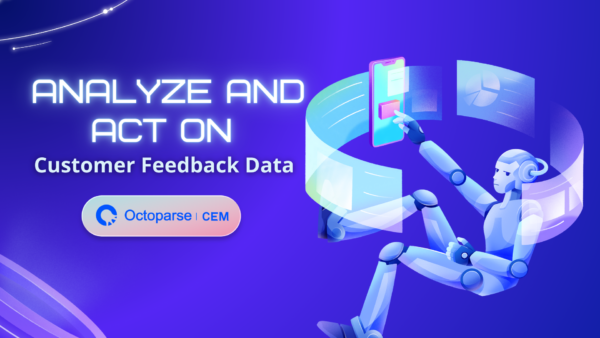Basics of VoC Software
In today’s customer-centric landscape, understanding the Voice of the Customer (VoC) is crucial for businesses seeking to deliver breakthrough customer experiences. So, what exactly is the Voice of the Customer and how can businesses harness it to their advantage?
What is Voice of the Customer?
Defining VoC and Its Importance
The Voice of the Customer refers to the feedback and insights provided by customers about their experiences with and expectations for products or services. This includes their preferences, expectations, and aversions. Embracing VoC allows businesses to listen to their customers effectively, predict customer behavior, and tailor their offerings accordingly. It forms the cornerstone of most companies’ customer experience strategies, focusing on understanding customer needs and improving customer satisfaction.
The Role of VoC Software in Gathering Customer Insights
VoC software plays a pivotal role in gathering and interpreting customer insights. By leveraging advanced analytics and AI, businesses can collect and analyze data from various touchpoints along the customer journey. This enables them to identify pain points, common technical issues, or other sources of customer frustration. The insights obtained through VoC software are instrumental in predicting and preventing customers from leaving by understanding key drivers and patterns in their behavior.
Choosing the Right VoC Software for Your Business
Key Features to Look For
When selecting a customer survey software, there are key features that businesses should consider. These include robust survey creation tools, real-time feedback collection mechanisms, sentiment analysis capabilities, and customizable reporting options. Additionally, integration capabilities with existing CRM systems are essential for a seamless flow of data.
Why VOC is a Popular Choice Today
VoC Octoparse has emerged as a popular choice for businesses looking to implement an effective VoC program. Its comprehensive suite of features encompasses everything from survey design to sophisticated analytics tools. With VOC Octoparse’ intuitive interface and ability to provide actionable insights, it has become an authoritative guide to voice-of-customer strategies.
How to Plan Your VoC Program?
Now that we have a clear understanding of the basics of VoC software, it’s essential to plan the implementation of your VoC program effectively. This involves setting clear objectives and preparing your organization for a successful integration.
Setting Clear Objectives for Your VoC Program
Identifying Key Customer Touchpoints
To begin, it’s crucial to identify the key touchpoints in the customer journey where you will gather feedback. These touchpoints could include interactions with customer service representatives, post-purchase surveys, or feedback mechanisms on your website. By pinpointing these touchpoints, you can ensure that you capture a comprehensive view of the customer experience.
Establishing Metrics for Success
In addition to identifying touchpoints, establishing metrics for success is vital. These metrics could encompass customer satisfaction scores, Net Promoter Score (NPS), and customer effort score (CES). By defining these metrics upfront, you can measure the impact of your VoC program and track improvements in customer experience management over time.
Preparing Your Organization for VoC Implementation
Training Your Team on VoC Best Practices
Preparing your organization involves training your team on best practices for collecting and utilizing customer feedback. This could include educating customer service representatives, sales teams, and product development staff on how to effectively gather insights from customers at various touchpoints.
Creating a Culture That Values Customer Feedback
Moreover, creating a culture that values customer feedback is essential for the success of your VoC program. This involves instilling a mindset across the organization that views customer feedback as invaluable and uses it as a guiding force to improve products, services, and overall customer experience.
By setting clear objectives and preparing your organization for VoC implementation, you lay the groundwork for a successful integration that will drive meaningful improvements in customer satisfaction.
Executing Your VoC Strategy
Now that you have laid the groundwork for your Voice of the Customer (VoC) program, it’s time to execute your strategy by effectively collecting and analyzing VoC data.
Collecting and Analyzing VoC Data
Implementing Surveys and Feedback Channels
To gather customer feedback effectively, implementing surveys and feedback channels is crucial. Utilize a variety of survey formats, including email surveys, in-app feedback forms, and post-interaction surveys. By offering multiple channels for customers to share their voice, you can capture a diverse range of insights that reflect different customer experiences.
Utilizing Voice of Customer Analytics for Powerful Insights
Incorporating Voice of Customer Analytics into your strategy allows you to derive powerful insights from the data collected. These analytics provide a deep understanding of customer sentiments, preferences, and pain points. By leveraging these insights, businesses can make informed decisions to improve products, services, and overall customer experience.
Turning Insights into Action
Prioritizing Feedback and Making Informed Decisions
Upon collecting and analyzing VoC data, it’s essential to prioritize feedback based on its impact on the overall customer journey. Identify recurring themes or issues that significantly affect customer satisfaction and loyalty. This approach enables businesses to allocate resources effectively towards addressing critical areas for improvement.
Examples of Successful Voice of Customer Strategies
Several companies have successfully implemented VoC strategies to drive meaningful improvements in their offerings. For instance, a leading e-commerce platform used customer feedback data to enhance its website navigation, resulting in a significant increase in user satisfaction. Another example is a telecommunications company that utilized VoC insights to streamline its customer support processes, leading to reduced wait times and improved customer satisfaction scores.
By mastering voice-of-customer strategies such as effective survey implementation, leveraging analytics for actionable insights, prioritizing feedback based on impact, and learning from successful examples, businesses can create impactful VoC programs that lead to tangible improvements in customer satisfaction.
Measuring Success and Making Adjustments
After implementing a Voice of the Customer (VoC) program, it’s essential to measure its impact and make necessary adjustments to ensure continuous improvement.
Evaluating the Impact of Your VoC Program
Analyzing Customer Satisfaction and Business Outcomes
Measuring CSAT (Customer Satisfaction) is a critical component of evaluating the effectiveness of your VoC program. By analyzing customer satisfaction scores obtained through feedback channels, businesses can gauge the success of their initiatives in meeting customer expectations. Additionally, assessing business outcomes such as repeat purchases, customer retention rates, and referrals provides valuable insights into the tangible impact of your VoC program on overall business performance.
The Importance of Continuous Learning and Adaptation
Continuous learning and adaptation are fundamental to the long-term success of a VoC program. By consistently gathering and analyzing customer feedback, businesses can identify evolving needs and preferences. This ongoing process enables organizations to adapt their strategies proactively, ensuring that they remain aligned with changing customer expectations and market dynamics.
Next Steps: Enhancing Your VoC Strategy
Leveraging Advanced Analytics and AI for Deeper Insights
To enhance your VoC strategy, consider leveraging advanced analytics and AI technologies. These tools provide deeper insights into customer behavior, sentiment analysis, and predictive trends. By harnessing these capabilities, businesses can uncover hidden patterns in customer feedback data, leading to more informed decision-making and targeted improvements.
Planning for Long-term Success with Your VoC Program
Long-term success with your VoC program involves strategic planning for sustained impact. This includes establishing mechanisms for continuous feedback collection, refining survey methodologies based on evolving best practices, and integrating VoC insights into broader business strategies for holistic growth.



